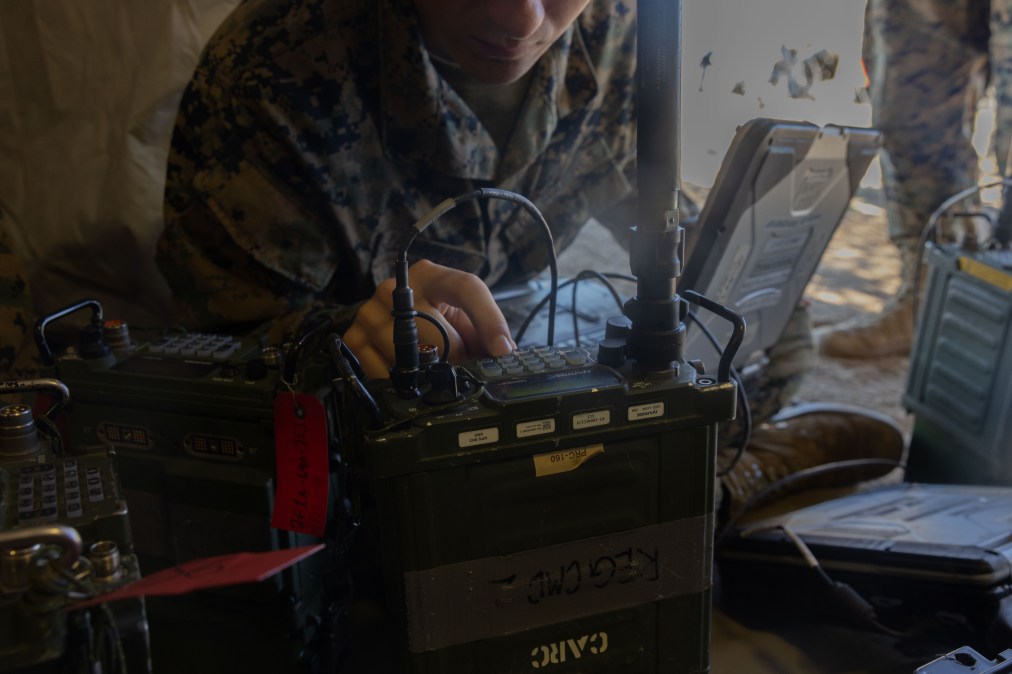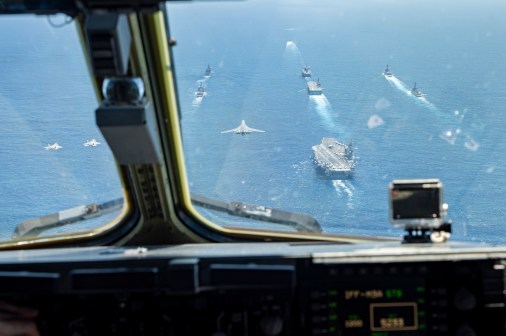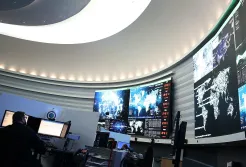Marine Corps taking data-centric approach to network and battlefield information

The Marine Corps is shifting its approach to the network, opting to focus more on getting data to the right place to enable faster decision-making.
The change is part of the Corps’ Network Modernization, or NETMOD, plan, which is a framework developed by the Office of the Deputy Commandant for Information to align resources and priorities for the network. It is a continual effort that is updated each year.
The paradigm shift pertains to the way the Corps thinks about its networks, moving from the now-outdated network-centric model — which envisioned a castle-and-mote mentality to network access — to a data-centric model, where the right information can be accessed by the right person anywhere with the proper security controls in place.
“As we talk about network modernization, I think you’ll see somewhat of a sea change come from the Deputy Commandant for Information office,” Maj. Gen. Ryan Heritage, commander of Marine Corps Forces Cyberspace Command and Marine Corps Forces Space Command, said in a December interview. “We’ll call it a change in focus, less network-focused and more data-centric and where we’re going and more of a more of a focus on the decisions that will be made from the tactical level all the way up to the strategic level. From a data perspective, how do we create a network that ensures not only the transport but the delivery and speed of the right data to the right decision-maker? That’s where we’re going.”
The military as a whole is undergoing a similar paradigm shift, focusing more so on data and access to it.
It is all part of the Pentagon’s top priority for Joint All-Domain Command and Control, or JADC2, which envisions how systems across the entire battlespace from all the services and key foreign partners could be more effectively and holistically networked to provide the right data to commanders for better decision-making.
“I think it comes with a more focused realization on the purpose of the network in support of the warfighter … Network modernization definitely served an enormous purpose both as a plan and as a governance tool to align our resources, our priorities … that supports force design 2030 [and] uncovered any seams and gaps that we may have. Then our warfighting approach has to be data-centric,” Heritage said. “As JADC2 is further developed, or joint fires network and that sort of thing is, how do we as a Marine Corps integrate or tap into those other networks and it’s going to be via data. Some sort of data fabric that’s going to connect us all.”
Heritage also noted one of his top priorities is assured command and control regarding the securing, operating and defending of the network. This includes unifying various networks that exist to include enterprise systems and those in the tactical sphere.
“We have units that are not yet fully integrated between the tactical and the enterprise network. We are getting there and we’re demonstrating that in the exercises,” he said. “From a resourcing [perspective], what we’re trying to demonstrate is some efficiencies. You don’t want a tactical unit spending money building a server stack in one country when the enterprise can be doing that for you at a different level. Allow that unit to use their resources elsewhere.”
The Army, for its part, has been on a multiyear journey as well to consolidate its various networks. This so-called unified network approach envisions a single global Army network that eschews the legacy theater-based system that also bifurcated between the enterprise and tactical space.






